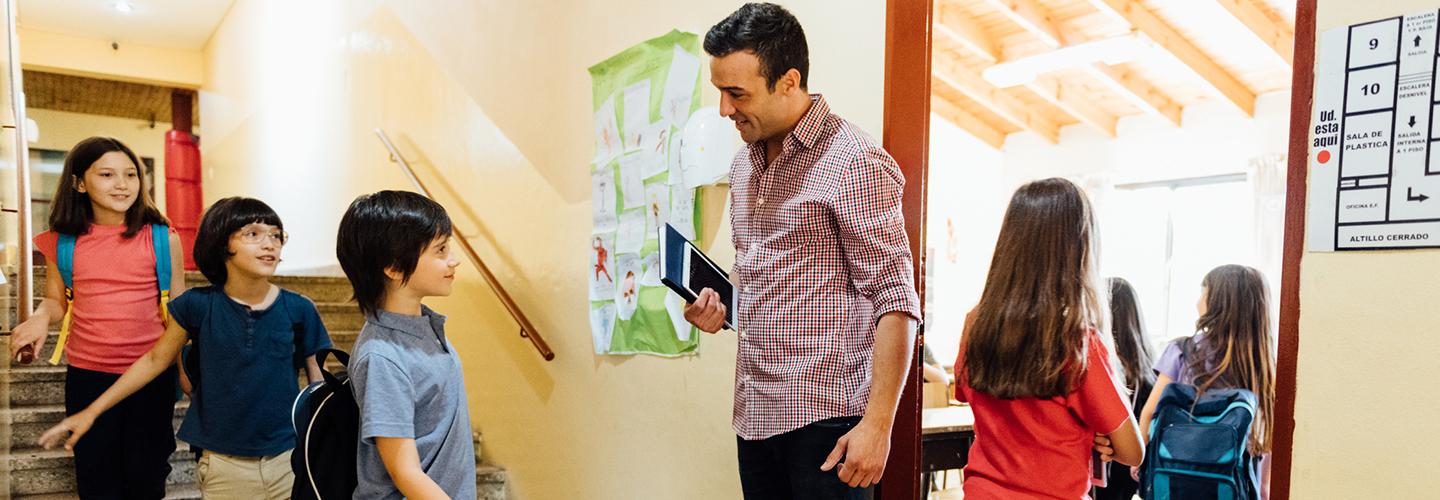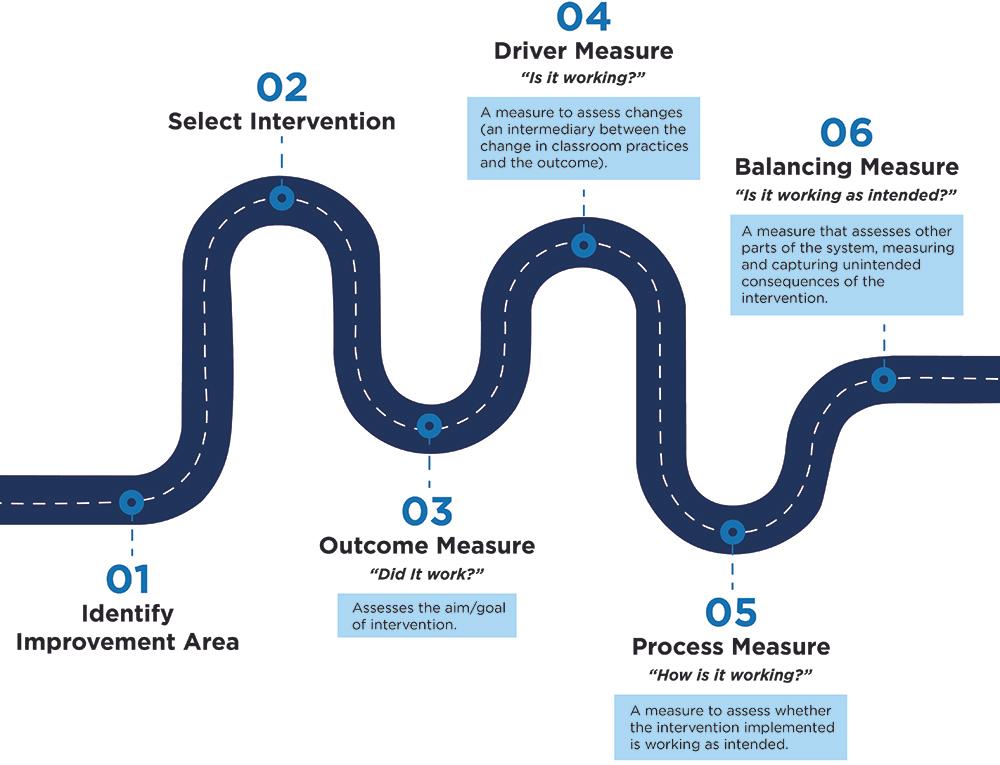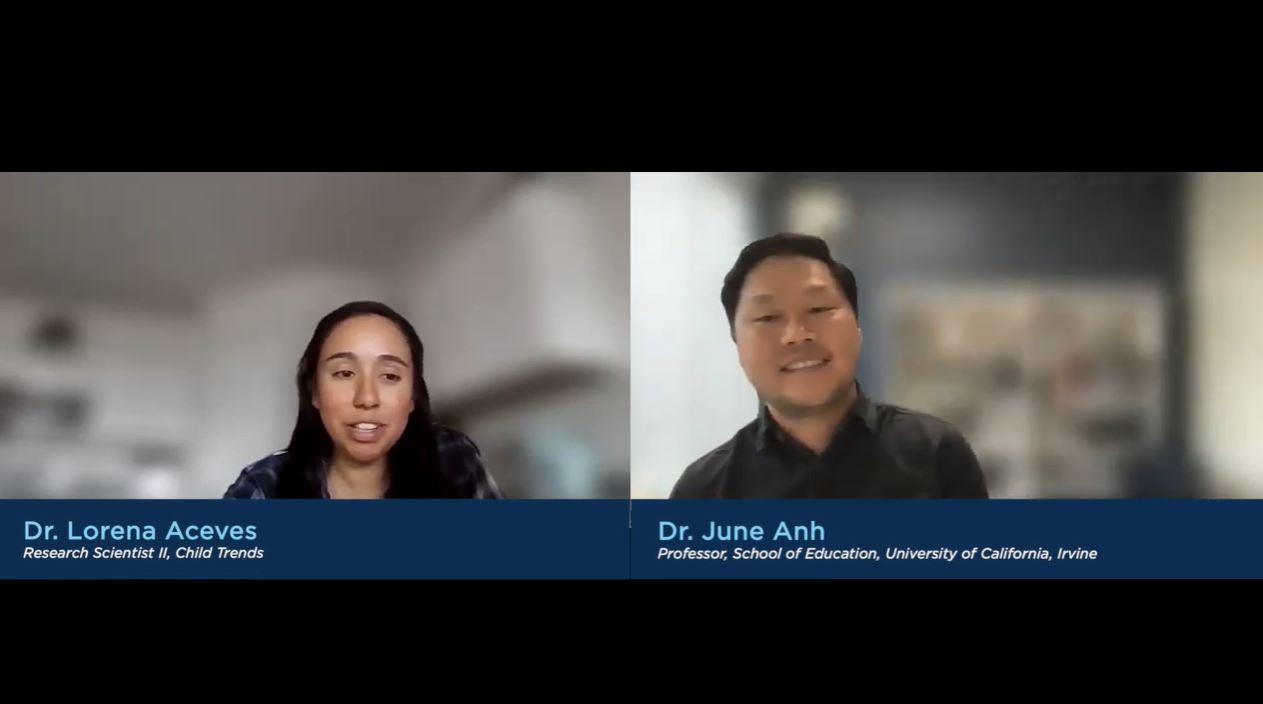
How to Use Practical Measures to Transform School Systems
This series from the Innovation to Evidence Project team at Child Trends aims to help practitioners, policymakers, and researchers transform K-12 school systems to better meet the needs of students, families, and communities. This practice guide focuses on practical measurement of school practices and programs and how it can be used to transform school systems.
Click below to listen to this publication:
One important aspect of transforming school systems is knowing whether the programs, tools, and practices that are being implemented are working as intended. In this practice guide, we aim to help practitioners, policymakers, and researchers learn more about using practical measurement. To help our readers, we’ll use a character—Terrance, a vice principal at the fictional Cherry Oak Elementary School—to illustrate the use of practical measurement to assess whether a student-teacher relationship-building tool is working as he intends.
Imagine that, while reviewing schoolwide data related to disciplinary referrals, Terrance uncovers a pattern among student referrals whereby 80 percent of students sent to the office were 4th-grade students. After investigating this trend, Terrance discovers that most of the referrals happened during the English Language Arts (ELA) block time.
Terrance believes the disproportionality in discipline may be a symptom of disengagement from the instructional strategies being implemented with the ELA curriculum. After convening the school improvement team and carefully considering the team’s ideas for classroom interventions/practices, Terrance ultimately begins training 4th-grade ELA teachers to implement an evidence-based, student-teacher relationship-building tool in their classrooms. However, after three months of implementation, disciplinary referrals remain largely unchanged. Terrance wants to use practical measurement to understand whether the new tool is working as he and the school improvement team intended.
How Practical Measurement Is Useful
Measurement “means determining the attributes or dimensions of an object, skill or knowledge.” In education, measurement is used to better understand how the school as a system is serving students to attain desired outcomes for each learner. Measurement helps school staff operationalize practices and interventions, better understand what is and is not working for each student, and better support conditions that foster and promote improved outcomes.
Measuring practices must be quick and easy-to-use for teachers given their different day-to-day responsibilities. Terrance and his team need to capture specific, actionable data through measures that promote quick analysis and disciplined inquiry. These types of measures allow his team to collectively reflect on their practices to be more strategic about implementing the student-teacher relationship-building tool in the 4th-grade ELA classrooms.
Characteristics of Practical Measurement
Practical measurement involves an accessible approach to measurement that can be used by education practitioners and staff to capture actionable data (e.g., data that provide clear insights to guide steps for instructional decision making) that can lead to improved classrooms and schools. Characteristics of practical measurement include:
- Clear, concise, high-impact, attainable improvement goals
- Positioned in classroom environments to foster change and improvement
- Seamless integration of data collection measures into routine activities and processes of teaching
- Data that the school team can examine to monitor and evaluate progress toward goals and outcomes
Applying Practical Measurement to Terrance’s 4th-Grade ELA Classrooms
Returning to Terrance’s original goal—reducing disciplinary referral rates—Terrance must focus on four aspects of the intervention: 1) Did it work? 2) Is it working? 3) How is it working? and 4) Is it yielding unintended consequences in the system? Each question can be answered through practical measurement, as outlined in the figure below.
Using Practical Measurement to Answer Four Questions About an Intervention

First question: “Did it work?”
This question can be addressed with the outcome measure, which assesses the aim/goal of the improvement initiative. In this example, the outcome measure is the review of end-of-semester discipline referral data to examine what percentage of referrals are 4th-grade students.
Second question: “Is it working?”
This question can be addressed with the driver measure, which assesses changes. Drivers serve as intermediaries between the change in classroom practices and the outcome. In this example, the driver measure is student exit tickets administered weekly by 4th-grade teachers to assess student engagement levels during ELA block.
Third question: “How is it working?”
This question can be addressed with the process measure, which helps Terrance and his team determine whether the student-teacher relationship-building tool is being implemented in classrooms as intended. In this example, the process measure is a meeting minutes template completed at each weekly 4th-grade ELA teacher professional learning community meeting to monitor the tool’s content and coverage. This allows Terrance to know how many teachers are using the tool and how it is being implemented in 4th-grade ELA classrooms.
Fourth and final question: “Is the intervention yielding unintended consequences in the system?”
This question can be addressed with the balancing measure, which helps Terrance keep a close watch on other parts of the system. The balancing measure seeks to capture the unintended consequences of change efforts—in this example, 4th-grade student ELA achievement results on end-of-semester exams. As Terrance and the team focus on alleviating 4th-grade student disciplinary referrals, they will want to ensure that these students continue to achieve on semester benchmark assessments. Before sharing how you can begin to use practical measurement in your own work, check out this video to learn from expert Dr. June Ahn, who shares some key information about how to dive into practical measurement.
Video

How You Can Begin Using Practical Measurement
As demonstrated by Terrance’s efforts at his school, practical measurement can be implemented to support and address issues that arise within schools throughout an intervention to support student learning. The scenario focuses on a specific instance of using practical measurement, but how can you use practical measures to support interventions in your classroom and school? Start by going through this checklist to create your plan:
- Identify the specific problem you want to solve.
- Identify which intervention(s) you want to test or implement to address this problem.
- Determine how you’ll measure whether the intervention(s) is/are effective.
- Select or develop measures.
- Refine the measure(s) you will use.
- Plan how you will collect data.
- Plan to analyze and dig into your data.
- Reflect and compile lessons learned.
Practical measurement is a practical tool to improve how school systems operate. This measurement tool is easy to implement by diverse school personnel and can facilitate deep learnings that improve students’ learning experiences. We hope this practice guide illustrates how you can use or improve your use of practical measurement in your school system work.
Resources
- Practical Measurement for Continuous Improvement in the Classroom: A Toolkit for Educators (developed by the Regional Educational Laboratory Southwest, Institute of Education Sciences, 2022)
- Practical Measures, Routines and Representations: Classroom Measures (developed by the Practical Measures, Routines, and Representations team)
- What We’re Learning: Using Practical Measures to Support School Improvement Initiatives (developed by Kate Hirschboeck, Senior Research Associate at WestEd and Sola Takahashi Senior Research Associate at WestEd, 2021)
- Practical Measurement Course (developed by the Global Center for the Development of the Whole Child, University of Norte Dame, 2024)
Suggested citation
Aceves, L., Ball, J., Cronkright, & Holquist, S. (2024). How to use practical measures to transform school systems. Child Trends. DOI: 10.56417/3083y3092q
© Copyright 2024 ChildTrendsPrivacy Statement
Newsletter SignupLinkedInThreadsYouTube